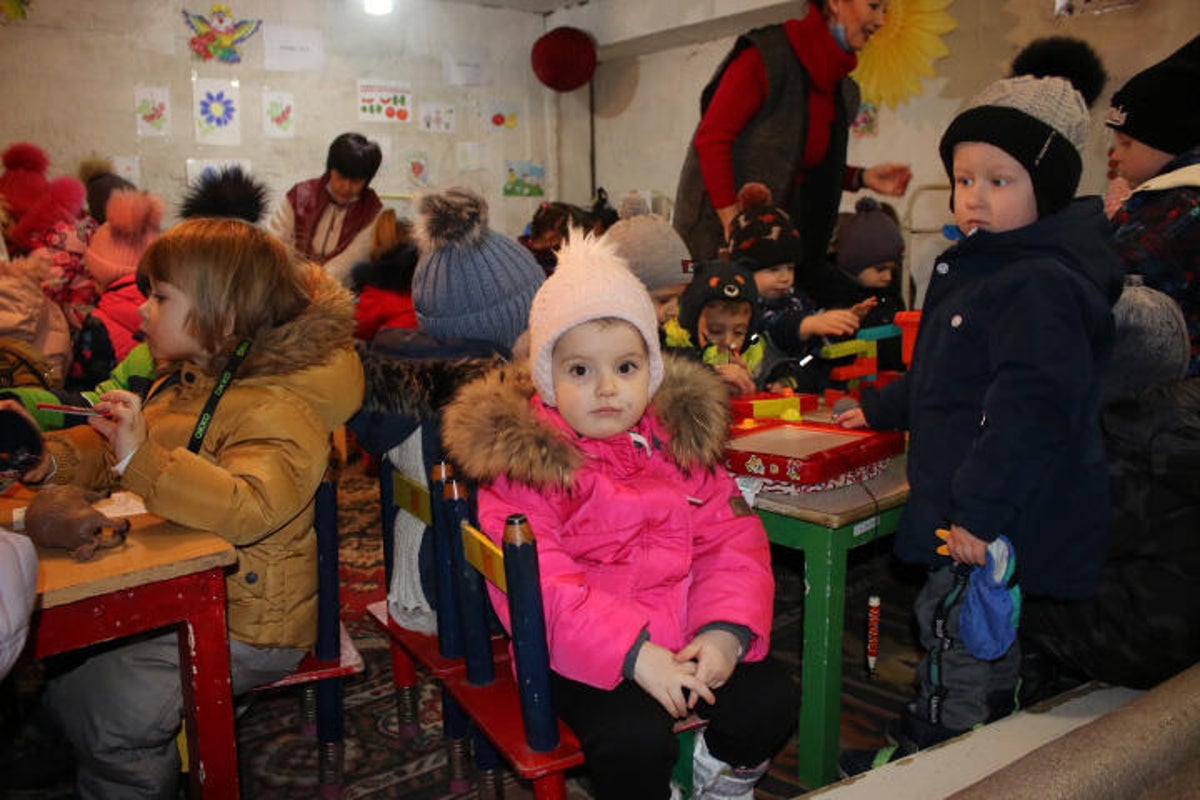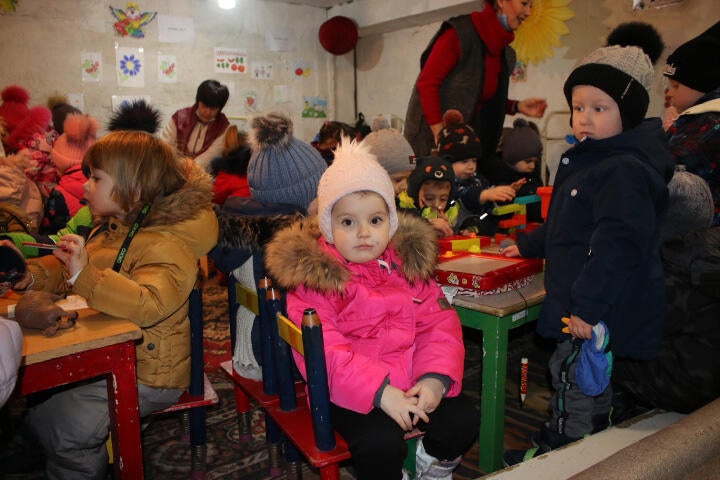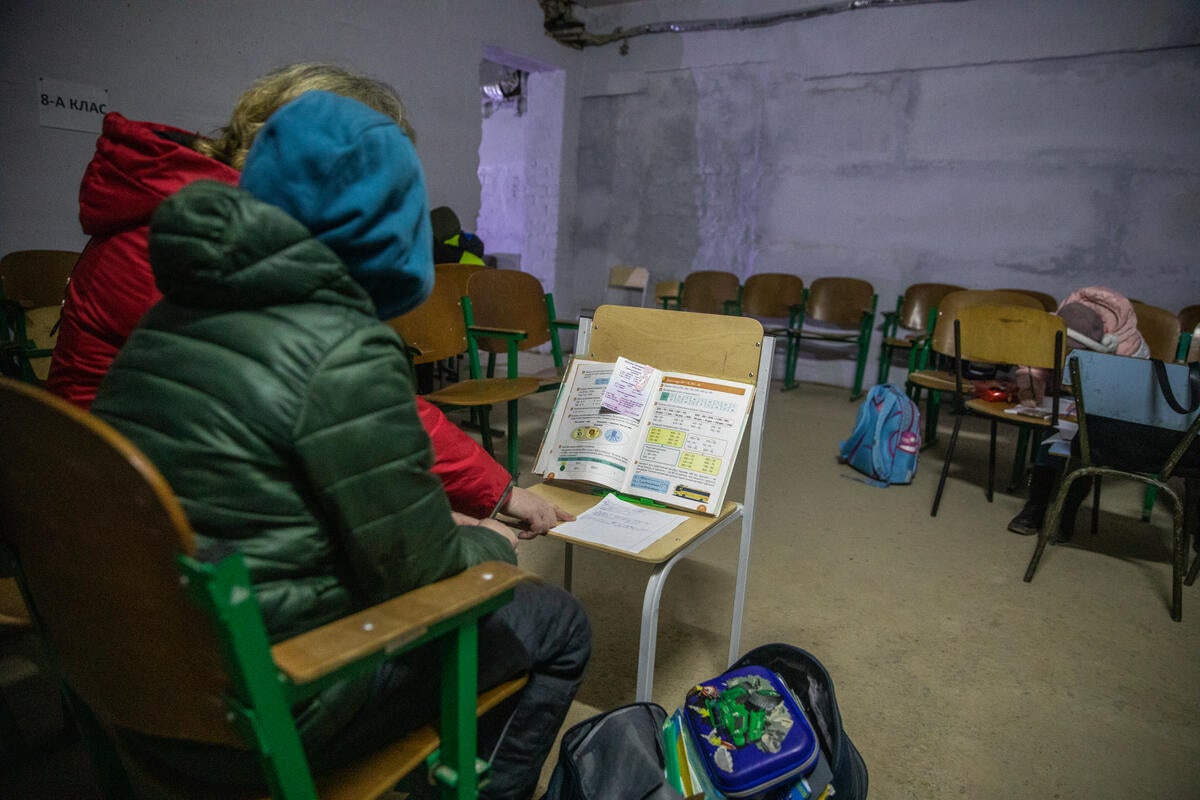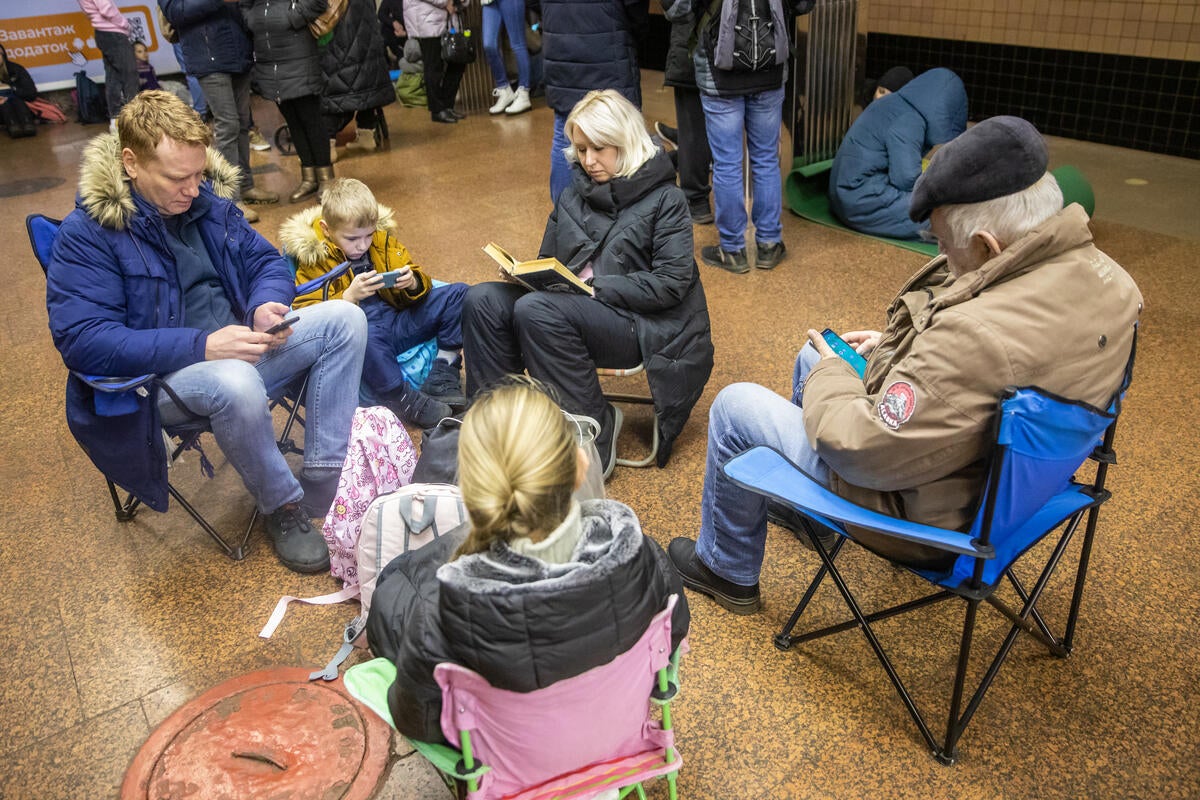
Children in Ukraine recall feeling “terrified to death” as they have been forced to hide underground for an average of 920 hours since Russian invaded Ukraine a year ago.
Running to bunkers upon the chilling screech of air raid sirens, families and children are often trapped for up to eight hours underground at a time, Save the Children has found.
Remembering the first explosions she experienced last year, 16-year-old Sofia* said: “I was having physics classes online when we first heard explosions ten kilometres away. They then began to land on nearby streets.

“Our teacher instructed us to rush to the shelter. When I got to the corridor, I heard a loud explosion. I only managed to sit next to the wall, close my ears, and open my mouth to avoid being shocked by the blast wave.
“We then dashed to the basement, closing the door only to have fragments fly across the basement, the roof, and the asphalt. I sobbed. It was a typical morning, and here we are.”
The UN estimates that more than 3.5 million children in Ukraine live under severe to catastrophic levels of needs across the country.
As of 10 February this year, there have been 16, 207 air raid sirens recorded across Ukraine, according to official data, lasting for about an hour on average.
In Kharkiv, there were more than 1,700 air sirens in the past year lasting for about 1,500 hours total, while regions of Donetsk and Zaporizhzhia experienced over 1,100 hours of alarms each.


After being displaced several times, Sofia worked with volunteers and got herself and eight other children evacuated, eventually to Zakarpattia, in the far west of Ukraine, where she now lives with her grandmother.
Even though the western region is deemed one of the safest, Sofia said the air raid sirens remain frequent. When a siren goes off, she normally spends an hour in a dark and cold cellar under their detached house. But if the alarm catches her while at school, taking shelter turns into a quest.

“If there is an air raid siren, the senior students – 9th to 11th grade – we go to the village council. They have equipped a bunker there,” Sofia said. “It takes us five minutes to run there or 15 minutes to walk.
“But I have always wondered if the alarm starts during blackout and we hear no siren, and there is a missile strike, how much would it take me to rush to the shelter… It took 47 seconds.”
Having an equipped and fully furnished bunker is not something everyone can afford, and many continue to take shelter in often cold basements of residential blocks or other buildings, the charity said.

In eastern Ukraine, the city of Dnipro was recently hit by a missile strike that killed 46 civilians when it hit an apartment block.
A teacher in a suburban kindergarten in Dnipro said air raid sirens are now a way of life for her pupils: “They get dressed, go outside, go around the institution, and go down to the shelter… It takes about 3 minutes for the children to get ready to go down.”
Sonia Khush, Save the Children country director in Ukraine, said: “Children didn’t start this war but they are paying the highest price.
“What always amazes me, however, is how resilient children are to withstand all the challenges, and how if we give them a chance they know how to take difficult experiences and turn them to growth, with a little bit of help.”
*Name has been changed to protect her identity







